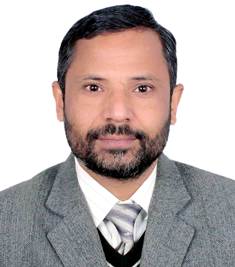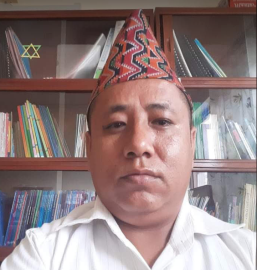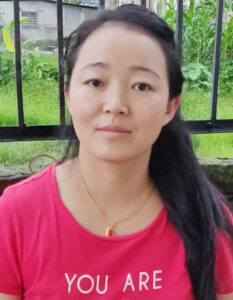
Introduction
Pedagogy concerns the process of teaching and learning which differs from the way it was practiced under a method which primarily focused on the delivery of information from the teacher to the students (Richards & Renandya, 2002, p. 5). So pedagogy is the conception of the post-methods practices which focus on “the dynamic interplay between teachers, learners, and institutional materials during the process of teaching and learning” (Brown quoted in Richards & Renandya, 2002, p. 6). That means, teaching, in pedagogy, is “a courageous occupation’’ and “a journey of hope based upon a set of ideals” (Day, 2004, pp. 8-20). It is an integral part of learning as Lieberman and Miller(as cited in Day, 2004, p. 105) state, “Teaching and learning are interdependent, not separate functions.” So in the process of teaching and learning as an integrated process, teachers are “problem posers and problem solver; they are researchers; and they are intellectuals engaged in unraveling the learning process both for themselves and for the young people in their charge.” That is to say, teachers are learning themselves through the process of teaching because in pedagogy learning is “not consumption’’; it is “knowledge production,” and similarly, teaching is “not performance”; it is “facilitative leadership” (Lieberman & Miller as cited in Day, 2004, p. 105). Similarly, Kumaravadivelu (2001) has conceptualized pedagogy in a much broader sense which includes not only the educational aspects of teaching and learning but also the sociocultural aspect. In this regard, he posits: “I use the term pedagogy in a broad sense to include not only issues pertaining to classroom strategies, instructional materials, curricular objectives, and evaluation measures, but also a wide range of historical, political, and sociocultural experiences that directly or indirectly influence L2 education” (p. 538). This conception of pedagogy is so comprehensive that it gives ELT practice a broad outlook which needs consideration from both educational and socio-cultural perspectives. That is, pedagogy should not be restricted to classroom boundary; it should go beyond the classroom and consider every factor pertinent to teaching and learning process. In this regard, the dialogue between Lord Krishna and Arjuna in the Gita captures the essence of pedagogy as the process of teaching and learning is situated in the wider socio-cultural, historical and political context.
Pedagogical Context in the Gita
When it comes to the pedagogy in the Gita, it is not that easier to understand as it has unique and multifaceted context. Being guided by the above theoretical discussion on pedagogy, the dialogue between Lord Krishna and Arjuna in the Gita, can be claimed to be a pedagogical discourse. So Lord Krishna, as a teacher, has both roles as a problem poser and a problem solver (verses 18:63; 18:72, Prabhupada’s Version) and Arjuna, as a learner, has been involved in knowledge production (verse18.73) rather than in consumption of knowledge. Similarly, Lord Krishna is not simply performing his role as a teacher; he is rather taking the role of a facilitative leadership (verse 18:72). As the dialogue between Lord Krishna and Arjuna took place in the battlefield before the commencement of the war, he took the leadership in guiding Arjuna in the war. All these constitute the institutional materials for pedagogy in the Gita. Thus, as pedagogy constitutes the dynamic interplay between teachers, learners, and institutional materials, we can observe the dynamic interplay between these dimensions of pedagogy in the pedagogy of the Gita.
More important, there are some studies and commentaries which identify Lord Krishna as a teacher and Arjuna as a learner. Regarding Lord Krishna’s role in the war, Radhakrishnan (2014, p. 33) identifies him as a teacher or guru as he guided Arjuna to the right path against “the forces of darkness, falsehood, limitation, and immortality which bar the way to the higher world.” As Arjuna was unwilling to take his responsibility in the battle (verse1:46), he takes refuge to higher self, Lord Krishna who is able to make him realize his duty (18:72). In this context, as teaching by Lord Krishna contains universal knowledge, Radhakrishnan (2014, p. 33) calls him ”the world teacher” or jagadguru. Similarly, Sargeant (2016, p. 2), in reviewing the role of Lord Krishna in the Gita, came to a conclusion that he is the Universal Guru who is teaching the lessons of universal significance. In the similar fashion, Dayananda (2014, p. 21) in his book, The Teaching of the Bhagavadgita, identifies Lord Krishna as a guru because, accepting Arjuna as his disciple, he has been able to teach him the practical lessons which have become most effective in solving his problems. With this background Prabhupada (1986, p. 21) also defines guru as ”the one who dispels the darkness of ignorance by the light of knowledge.” Thus, the broad conceptualization of pedagogy can be observed in the dynamic role of Lord Krishna as a teacher and Arjuna as a learner in the pedagogy of the Gita. Besides, the contents of the Gita further justifies how pedagogy should be able to incorporate historical, socio-cultural, political and academic aspects of educational project as deconstructive pedagogy (Kamali, 2021b).
Pedagogy of the Gita, Postmethod Pedagogy and Deconstruction: A Grand Confluence of Pedagogy
The pedagogy of the Gita can be compared with the postmethod pedagogy as advocated by Kumaravadivelu (2001) in his article entitled “Toward a Postmethod Pedagogy” because the methodology employed by Lord Krishna in teaching Arjuna contains many of his concepts. Accordingly, Lord Krishna’s pedagogy in the Gita can be compared with Derrida’s deconstruction as Lord Krishna deconstructed Arjuna’s psychology—he was not ready to lead the war in the beginning (verses 1:47) but in the end, after the instruction by Lord Krishna, he became ready to do his duty (18:73).Thus, as Derrida (1986, as cited in Higgs, 2002, p. 170) deconstructed the metaphysics of presence grounded on structuralism and gave way to deconstruction and poststructuralism/postmodernism, Kumaravadivelu (2001, p. 537), in the same vein, deconstructed the centralized practice of ‘method’ and opened up multiple possibilities in pedagogy. In this regard, he commends: “As a consequence of repeatedly articulated dissatisfaction with the limitations of the concept of method and the transmission model of teacher education, the L2 profession is faced with an imperative need to construct a postmethod pedagogy” (p. 537). In this way, deconstruction of methods gave birth to postmethod pedagogy as deconstruction of structuralism to poststructuralism and postmodernism in philosophy. As a result, deconstruction and postmethod pedagogy have become inseparable. Thus, both recommend practices as “an open-ended inquiry,” and “a work in progress” (Kumaravadivelu, 2001, p. 537). These features are equally pertinent in the pedagogy of the Gita as Lord Krishna has practiced the pedagogy as an open-ended inquiry and a work in progress because Arjuna is free to learn and make decision on his own and learning has been regarded as a process (verse 18:63).
Thus, method of teaching has been transformed into pedagogy as a post-method practice which is defined as a movement away from a preoccupation with generic teaching methods towards a more complex view of teaching which encompasses a multifaceted understanding of the teaching and learning process (Richards & Renandya, 2002). In this regard, Richard and Renandya (2002, p. 5) further argue that in the post-methods era attention has been shifted to teaching and learning process and the contribution of the individual teacher to pedagogy rather than the output of the process. In the same vein, Brown (as cited in Richard and Renandya, 2002, p. 6) defines pedagogy as a ”dynamic interplay between teachers, learners, and institutional materials during the process of teaching and learning. By this he has deconstructed the dominant role of teachers in pedagogy and considered the roles of multiple factors contributing to effective pedagogy; it is the same case with deconstruction as it never ends with fixity; the outcome of the deconstructive analysis is always the possibility of multiplicity— difference (Derrida as cited in Culler, 1982, p. 97)! Thus, deconstruction makes pedagogy is more process-oriented and inclusive of all factors conducive to post-method pedagogy which has been further developed into “deconstructive pedagogy” (Kamali, 2021b, p.73).
ELT Practices as Deconstructive Pedagogy: A Conclusive Remark
As a global phenomenon, ELT has divergent practices due to its variations and myriad contexts. No single approach, method and strategy seems to be overarching in present ELT practices. Thus, it is required that ELT practices be like deconstructive pedagogy and ELT practitioners play the roles of a deconstructionist teacher like Lord Krishna in the pedagogy of the Gita as follows (Kamali, 2021a, pp. 73-74): 1. A deconstructionist teacher practices pedagogy as deconstructive pedagogy founded on deconstruction; 2. A deconstructionist teacher can fully act as an autonomous practitioner; 3. A deconstructionist teacher can develop a reasonable degree of competence and confidence in performing pedagogy; 4.A deconstructionist teacher not only critically implements theories into practice but he/she also builds theories out of practices; 5. A deconstructionist teacher focuses on the interplay between theoretical and practical dimensions of pedagogy and lets it open to any possibilities to make the pedagogy more effective in context.
The author: Dr. Hari Chandra Kamali is an Associate Professor of English education at Far Western University, Nepal. He pursued his PhD from Nepal Sanskrit University. Dr. Kamali has published several articles and presented papers in different conferences at home and abroad.
References
Culler, Z. (1982). On deconstruction: Theory and criticism after structuralism. Cornell University Press.www.z.lib.org
Day, C. (2004).A passion for teaching. RoutledgeFalmer.
Dayananda, S. (2014).The teaching of the Bhagavadgita.Vision Books.
Higgs, P. (2002). Deconstruction and re-thinking education. South African Journal of Education,22 (3), 2002, 170 – 176. www.academia.edu.
Kamali, H. C.(2021a). ‘Deconstructionist’ as the role of a teacher in postmethod pedagogy.Technium Social Sciences Journal,19 (1), 67-75. https://doi.org/10.47577/tssj.v19i1.3324
Kamali, H. C. (2021b). Lord Krishna as a deconstructionist teacher in the Bhagavadgita [Unpublished doctoral dissertation]. Nepal Sanskrit University.
Kumaravadivelu, B. Toward a postmethod pedagogy.TESOL Quarterly, 35(4), 537-560. https//doi.org/10.2307/3588427
Prabhupada, A. C. B. S. (1986). Bhagavad-gita As It Is(2nd ed.).The Bhaktivedanta Book Trust.
Radhakrishnan, S. (2014).The Bhagavadgita.Harper Collings Publishers.
Richards, J. C., &Renandya. W. A. (2002). Approaches to teaching. In J. C. Richards & W. A. Renandya (Eds.), Methodology in Language Teaching: An Anthology of Current Practice(pp. 5-8). Cambridge University Press.
Sargeant, W. (2016).The Bhagavad Gita. Aleph Books Company.






 Abstract
Abstract Reflection in ELT
Reflection in ELT Abstract
Abstract  As the country was on lockdown due to the spread of Covid-19 for the second time, I, as a teacher was compelled to switch myself in the virtual mode of delivery. Both variants separated teachers and students; therefore, we started practicing online mode of delivery. I could not deliver the lessons in the very beginning. During the lockdown, the government instructed all the schools to facilitate the students in an alternative mode of teaching instead of physical facilitation. Rationalizing the fact of the transmission of Covid-19 in the community, we were compelled to operate schools and teaching in online mode which has been the bliss for all of us, teachers and students.
As the country was on lockdown due to the spread of Covid-19 for the second time, I, as a teacher was compelled to switch myself in the virtual mode of delivery. Both variants separated teachers and students; therefore, we started practicing online mode of delivery. I could not deliver the lessons in the very beginning. During the lockdown, the government instructed all the schools to facilitate the students in an alternative mode of teaching instead of physical facilitation. Rationalizing the fact of the transmission of Covid-19 in the community, we were compelled to operate schools and teaching in online mode which has been the bliss for all of us, teachers and students.









